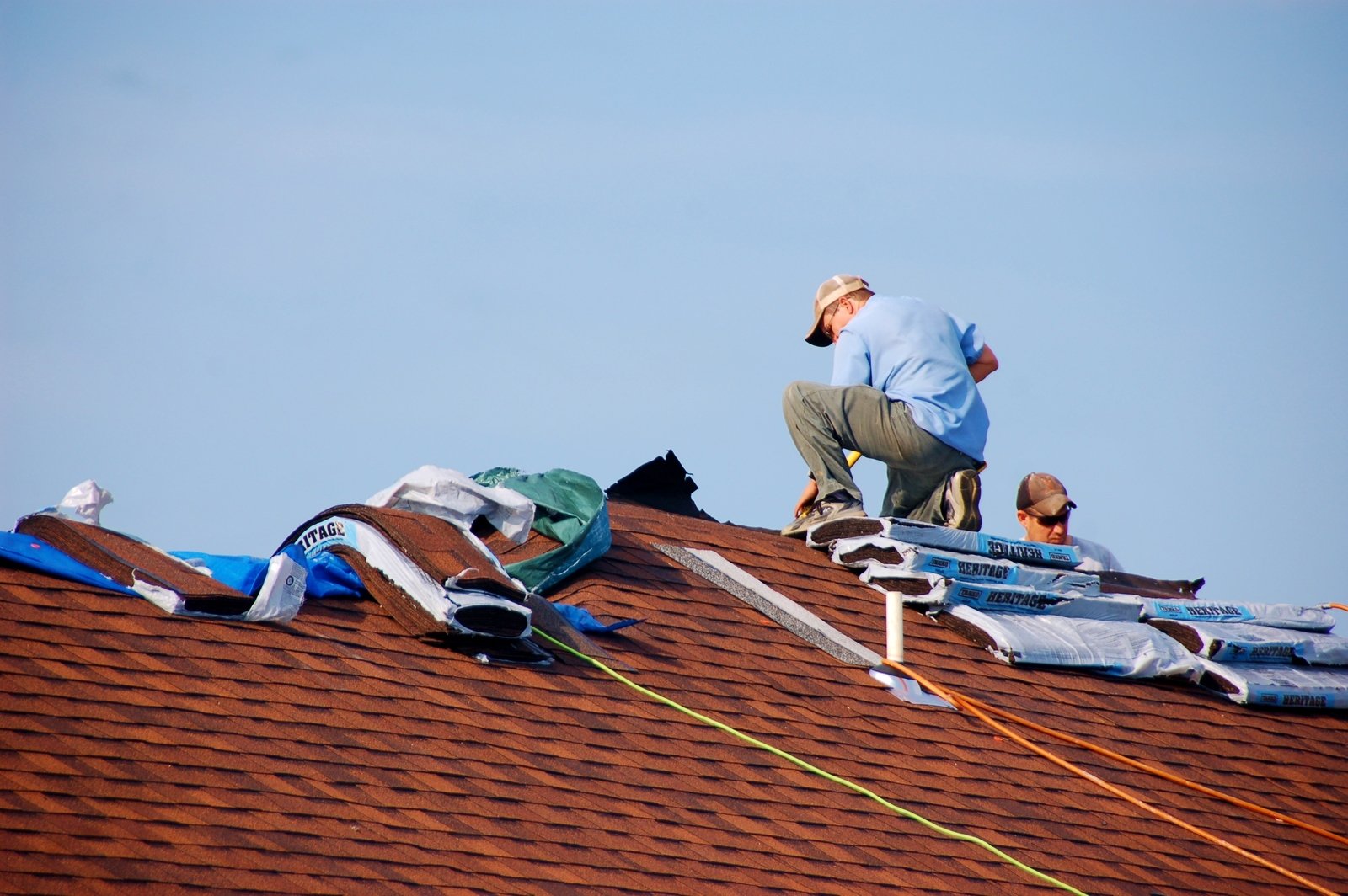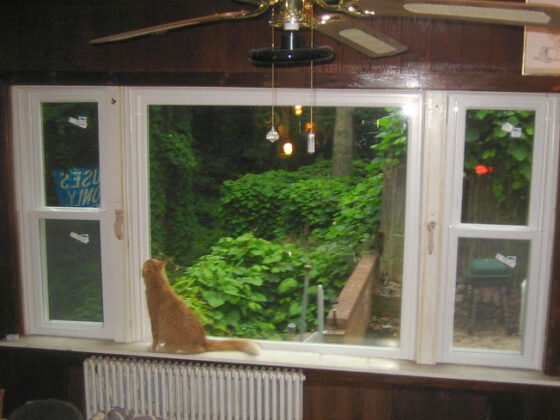Table of Contents Show
A roof is one of the most important parts of your Trenton, NJ home – it protects you from the sun, wind, rain, and snow. And like any other piece of equipment, it needs regular maintenance to stay in good shape.
In this blog post, we’ll teach you some tips for repairing and maintaining your roof. From understanding common roof problems to figuring out when it’s time for a new roof, read on to learn everything you need to keep your home safe and your roof in good condition.

Understanding Roof Repair
Roof repair and maintenance are important to keep your home in top shape. Here are some tips to help you get the most out of your roof: Have an accurate inspection done on a regular basis.
A good inspection will help you identify any problems with your roof, as well as potential solutions.
Regularly check for signs of water damage, such as leaks or rot on the roofing material.
If you notice any of these issues, take action right away! Water can cause extensive damage to a roof, and can eventually lead to major repairs or replacement. Watch for weather conditions that could potentially damage your roof.
For example, heavy rain can cause runoff that can lead to water leaking onto the roofs, while high winds can cause tiles and shingles to fall off the roof.
Keep an eye on local news reports in case you need to take preventative measures before a storm hits. Be sure to get regular maintenance done on your roof.
This includes checking the caulking joints and flashing around the edges of the roof, as well as checking for moss or other growth on the shingles. If anything seems amiss, bring it up with your contractor right away!
Inspecting Your Roof for Damage
Are you noticing signs of damage on your roof? If so, you may need to have it inspected. Here are some tips to help keep your roof in top condition:
Check for leaks: A damaged roof may be leaking water, snow, or ice. Check all around the perimeter of the roof for any signs of leakage. Fix any leaks that you find as soon as possible.
Look for shingles that are bowed or warped: This is a sign that there is water damage underneath the shingles. Replace any shingles that show evidence of water damage.
Check for moss and algae growth: Moss and algae can indicate that the roof is wet all the time, which can lead to rot.
Remove any moss or algae growth if you find it, and clean the area with a hose. Test Roof Strength: It’s important to check the strength of your roof every year by using a professional testing company.
Your insurance company may require this before they will cover any damage done to your home due to stormy weather conditions.
Read Also:
What is Roof Repair and Maintenance?
Roof Repair and Maintenance: Tips Will Help Keep Your Roof in Top Shape
Your roof may be one of your most important investments, and it’s important to keep it in top condition. Here are some tips for keeping your roof in good shape: Regularly check the roof for damage, cracks, and leaks.
If you see any sign of trouble, call a roofer right away. A failed roof can lead to severe weather conditions inside your home, costing you more in repair costs down the road.
Always use a quality roofing material that is designed to last. Don’t skimp on the quality of your materials; cheap roofs will only last a few years before they start to fail.
Clean and maintain your gutters regularly to avoid water damage from leaking roofs or rain gutters overflowing onto the ground. Gutters should also be cleaned out if they become clogged with leaves or other debris.
Get your rooftop insulated if it is able to be done so safely and affordably – this will help reduce energy costs over time and make your home more comfortable in the wintertime.
Insulation also protects your roof from moisture damage in the future. Be sure to properly ventilate your home during hot weather months – this will help prevent moisture build-up inside your walls and ceilings, which can cause structural failure of the building itself
Types of Roof Repair
If your roof is in need of repair, you’re not alone. According to Trenton roofing, roofs are the most common type of construction project that incurs damage.
In fact, NRCA estimates that more than 1 in 10 homes experiences some type of roofing problem each year. Some common problems include leaks, wind and hail damage, and failing shingles.
Here are four types of roof repair: Replacing Failed Shingles: If one or more shingles have failed, it’s important to replace them as soon as possible to avoid further damage and potential water infiltration.
To do this, use a ladder to access the shingle(s) above and remove them with a crowbar or screwdriver. Check for nails holding the shingles in place and remove them if necessary.
Once all the shingles are removed, clean up any debris using a broom and dustpan. Apply a new coat of asphalt or silicon sealant to the joists and rafters beneath the shingles before replacing the sheet metal roof covering.
Patching Leaks: A leak can be small – like around a door or window – or it can be larger, like from a broken pipe on the roof.
In either case, repairing the leak is usually easier than replacing the entire roof. First, identify where the leak is coming from by checking for water
How to Repair a Leak in Your Roof?
If you have a leak on your roof, there are a few things you can do to repair it. Here are some tips: Look for the source of the leak. This will help you determine where the repairs need to be made.
The most common sources of leaks are around the gutter, underneath the shingles, or in the flashing around the roof edge.
Fix any broken parts. If there is debris or insulation caught in the leaking area, fix these with a patch kit or by using a plunger to suction up anything that is blocking the water from flowing out properly.
Broken pieces of shingles and tiles can also be replaced as needed. Check for damage elsewhere in the building and make repairs as needed.
If there is water leaking into a basement, for example, make sure stairs or other areas leading down are properly sealed against water infiltration and that exposed electrical wiring is protected from weather damage.
Contact your insurance company or contractor if necessary to get approval for a repair before starting work.
How to Repair a Damaged Roof Shingle?
If you have a damaged roof shingle, there are a few things you can do to repair it. The first thing you should do is assess the damage. You will need to know the shape of the shingle, how much has deteriorated, and what type of roofing material your house has.
Once you know this information, you can start to determine how much work needs to be done. If there is only a small hole in the shingle, then a patch can be glued or nailed in place.
If there is an extensive tear or hole, then the entire shingle may need to be replaced.
To replace a roof shingle, follow these steps: Remove any debris or dirt from around the area where the new roof shingle will be installed.
This will help prevent water from seeping into the crack and rotting the wood around it. Mark the location of the new shingle on the roof using a level and compass.
Make sure that you take into account any dips or ridges in your roofing material. Cut out the old shingle using a Sawzall or an axe. Make sure to remove all of the nails and screws holding it down before cutting it away.
Install new galvanized steel roofing tiles over the top of the holes in your old shingle using self-tapping screws. Nail each tile into place using metal flashing (available at most
Tips for Cleaning Your Roof
If you are like most homeowners, the last thing you want to do is spend time cleaning your roof. But if your roof is not clean, it can start to leak and cost you more money in the long run.
Here are some tips for cleaning your roof: Patch any large tears or holes in your shingles. This will help keep water and debris from coming in and causing damage.
Clean gutters and downspouts if they are clogged. Dirty water can lead to leaks on the roof.
Check for signs of moss or algae growth on the shingles or around any flashing or gutters. These growths can cause leaks as well as an overall dirty look to your roof.
Raise a ladder if possible and sweep up all debris from around the chimney, flashings, vents, and other areas that could collect rain and snow runoff.
This will help reduce the chances of water damaging these parts of the roofing system.










